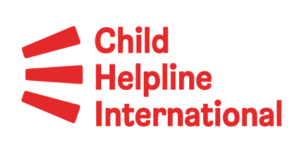While there is a basic-level of understanding of the correlation between conflict and human trafficking, the specific context in which this may play out in Ukraine has been relatively understudied. As a Lecturer in Modern Slavery at the Wilberforce Institute of the University of Hull who specializes in the connection between conflict and human trafficking, I was pleased to be able to support Child Helpline International’s Ukraine war response in their workshops in Poland and Bulgaria.
For the workshops, I supported my own research with the most recent reports coming out of Ukraine to increase participants’ knowledge around what human trafficking is, including the key risks that could lead to trafficking and the forms in which it can present.
Risks in Ukraine
Human trafficking occurs when there is a misbalance of power in a relationship. There always needs to be a victim and a perpetrator for trafficking to occur, however, the environment is also a crucial component in either encouraging or preventing the exploitation from happening. In times of rapid change, such as with the full-scale invasion of Ukraine where political priorities are renegotiated, people are displaced from their homes and social networks, and breakdowns occur in state institutions, the risk of trafficking increases. EUROPOL issued an Early Warning in March 2022, stating that the highest risk of trafficking in Ukraine exists in organized crime groups targeting victims on the border, under the pretence of promises of transportation, accommodation, employment, or other forms of immediate support. This reinforces our understanding that disruption and desperation can lead individuals to accept support from strangers and take risks that they usually would not, and such actions increase the risk of being deceived into a situation of extreme exploitation.
The risks for children are heightened further because they are more likely to be dependent on others and less able to accurately analyse potentially dangerous situations and make informed decisions. These risks can be compounded further for children who are unaccompanied, who have been removed from education for a significant length of time, or who have been exposed to trauma – all likely occurrences in a conflict situation.
Types of trafficking
There is often an assumption that human trafficking presents only in the form of sexual exploitation, but the crimes span a far broader scope than this. Within the training, the counsellors and I worked on their ability to be able to recognize cases of trafficking, using case examples from my own work while encouraging them to do the same.
Trafficking can play out in various different forms including organ harvesting, criminal exploitation and domestic servitude. In the context of Ukraine, there is evidence already of sex trafficking, with Russian soldiers using sexual violence and rape as weapons of war. There is also evidence of labour exploitation with reports showing Ukrainians being forced to work on their own farms, held at gunpoint by Russian soldiers, and then having the crops and farming equipment taken from them. In addition to this is a risk of trafficking in the form of child soldiers, with a child soldier being any person under the age of 18 associated in any way with an armed force or group. There have been reports of Russian-led forces using children to perform armed duty at checkpoints and to serve as fighters, guards, mailpersons and secretaries.
Outcomes
At the beginning of the training sessions it was clear that counsellors generally felt that they lacked a comprehensive understanding of the drivers of human trafficking and how this might affect the children who contact them. Most counsellors stated that they had never come across a case of trafficking. However, as the discussions progressed, several participants were able to give examples of cases of trafficking that they had encountered, often simply not realizing that it met the definition. Overall, counsellors reported that their knowledge of human trafficking improved as a result of the workshops, and informal conversations with participants at the time suggested that they felt much more confident to be able to ask the right questions to be able to identify and respond to future possible cases. Such instances really highlight the importance of sessions like these which allow participants the chance to share experiences, to learn key facets of an issue that might affect the children that call them, and to develop plans of action of how to effectively respond to future cases.
Dr Alicia Heys
Lecturer in Modern Slavery, Wilberforce Institute
Alicia specializes in issues of policy, agency and representation. She is a research fellow for the Modern Slavery & Human Rights Policy & Evidence Centre, looking at the legal enforcement of modern slavery.

Building on the success of these workshops, Child Helpline International and Haunted Planet Studios turned the key learnings from this and our SGBV training for counsellors responding to the war in Ukraine into a “Serious Game”. Read more about it here.

